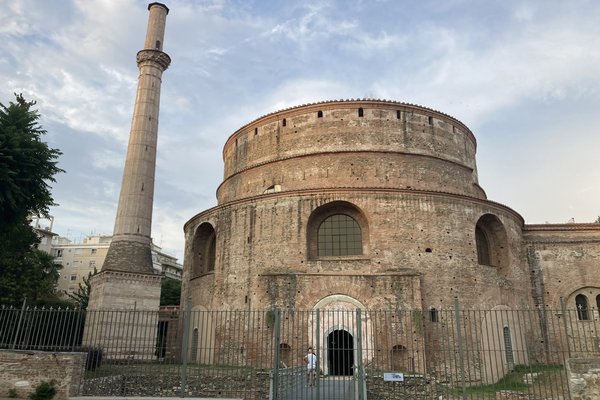Greece
Thessalonika
The Paleochristian and Byzantine Monuments of Thessalonika comprise a series of mostly religious monuments known for their mosaics and distinct architectural typology.
Thessalonika was the Byzantine Empire's second city (to Constantinople) and an important artistic centre. These monuments were constructed from the 4th to the 15th century. They contain masterpieces from Early Christian art (such as the mosaics in the Rotunda), as well as subsequent periods, culminating in the churches of the late Byzantine Period.
Community Perspective: Thessaloniki is a convenient hub to explore the WHS of northern Greece. Allow one day in the city itself to check out the 15 components, and be aware that some have very limited opening hours. Assif has provided a good summary, while Hubert additionally recommends the Museum of Byzantine Culture.
Site Info
Official Information
- Full Name
- Paleochristian and Byzantine Monuments of Thessalonika (ID: 456)
- Country
- Greece
- Status
-
Inscribed 1988
Site history
History of Thessalonika
- 1988: Revision
- Reduced from former TWHS Thessaloniki (1985)
- 1988: Inscribed
- Inscribed
- Type
- Cultural
- Criteria
- i
- ii
- iv
Links
- UNESCO
- whc.unesco.org
- Official
-
- odysseus.culture.gr — Hellenic Ministry of Culture and Tourism
- Related
-
- thessaloniki.travel — Thessaloniki Tourism Organization
All Links
UNESCO.org
- whc.unesco.org — whc.unesco.org/
Official Website
- odysseus.culture.gr — Hellenic Ministry of Culture and Tourism
Related Resources
- thessaloniki.travel — Thessaloniki Tourism Organization
News Article
- April 13, 2020 greekcitytimes.com — Anarchists graffiti on World Heritage church in Thessaloniki
- Dec. 19, 2015 tornosnews.gr — Roman Rotunda in Thessaloniki reopens after restoration
- March 14, 2010 ana-mpa.gr — A large early Christian Basilica and an important late Byzantine period building were unearthed at a same number of Thessaloniki metro construction sites over the recent period.
Community Information
- Community Category
- Archaeological site: Byzantine
Travel Information
Recent Connections
-
Perfect Inscriptions
1988 -
Depicted in Mizielinska Maps
Rotunda of GaleriusSee i.pinimg.com
-
Palaeologan Renaissance
"Wall painting ensembles, mosaics and f…
Connections of Thessalonika
- Geography
- Trivia
-
-
Depicted in Mizielinska Maps
Rotunda of GaleriusSee i.pinimg.com
-
Modelled after
Hagia Sophia in Thessaloniki is modelled after Hagia Sophia in Istanbul -
In the Istanbul museum
The Rotunda Ambo
-
- History
-
-
The Tetrarchy
Galerius, as Caesar of Illyricum, chose Thessalonika to become the main centre for his court between 293/311. He created a monumental quarter and ordered the building of a Triumphal arch to celebrate his victory over the Persians in 298 (which included the taking of Ctesiphon)- it was dedicated in 302. By 306 he was "Augustus" and ordered the building of the Rotunda probably as a Temple. -
Located in a Former Capital
Kingdom of Thessalonica (1204-1224) -
Roman monuments converted into churches
Galerius Tomb (Rotunda) -
Byzantine Empire and Civilization
The influence of the Thessalonian churches on the development of the monumental arts was considerable first in the Byzantine and later the Serbian world, whether in the Early Christian period, the Middle Byzantine era or the Palaeologan Renaissance. (OUV)
-
- Architecture
-
-
Spolia
The Ottoman Heptapyrgion fortress shows spolia with Greek inscriptions as decorative elements; Hagios Demterios was renovated after the Great Fire of 1917 using tombstones from the Jewish cemeterySee en.wikipedia.org
-
Mosaic art
-
Domes
Rotunda -
Faux marble
Ottoman faux marble at Hagia Sophia -
Tetraconch
Church of the Saviour -
Brick architecture
The churches are made out of brick. -
Palaeologan Renaissance
"Wall painting ensembles, mosaics and frescoes, preserved in Thessalonika's monuments, represent some of the major artistic trends, that have been developed in Byzantine monumental painting from its beginnings to its culmination known as the Palaeologan Renaissance (late Byzantine period). To this last period belong significant monuments such as the Holy Apostles, the chapel of Saint Euthymios in the Church of Saint Demetrius, Saint Nikolaos Orphanos, Saint Panteleimon, the Transfiguration of the Saviour, Saint Aikaterini, Prophitis Ilias, the Katholikon (main church) of the Vlatadon Monastery which reflect all the tendencies of the Palaeologan Renaissance." - OUV
-
- Damaged
-
-
Iconoclasm
Most mosaics were destroyed during the Byzantine Iconoclasm -
Destroyed or damaged by Earthquake
Some sites were damaged during an earthquake in 630, others during the Chalkidiki earthquakes of 1932 and the Rotunda in 1978 (wiki)
-
- World Heritage Process
-
-
Perfect Inscriptions
1988 -
Reduced from broader TWHS
TWHS originally included archaeic and classical monuments of Thessaloniki.
-
- Religion and Belief
-
-
Cathedrals
Hagia Sophia - "In 1205, when the Fourth Crusade captured the city, the Hagia Sophia was converted into the cathedral of Thessaloniki, which it remained after the city was returned to the Byzantine Empire in 1246."See en.wikipedia.org
-
Converted Mosques
Galerius' Masoleum which was turned into a church (St Gregorios and not Demitrius) and then into a mosque. -
St Paul was here
The Monastery of the Vlatades contains a chapel where traditionally St Paul preached in AD51See orthodoxwiki.org
-
Jewish religion and culture
Hagios Demterios was renovated after the Great Fire of 1917 using tombstones from the Jewish cemetery -
Notable mosques
The Church of the Acheiropoietos was converted into a mosque and is nowadays referred to as the Old Mosque.
-
- Human Activity
-
-
Via Egnatia
Odos Egnatia is still a major street in Thessalonika and the Paleo-Christian churches of Panagia and Christ Saviour face on to it. See
-
- Constructions
-
-
Baths
Byzantine baths in the Acropolis -
Catacombs
Under Hagios Demetrios -
Mausolea
Galerius intended the Rotunda to be his mausoleum -
Acropolis
The Thessaloniki Acropolis lies in the northeastern and highest point of the city, just beyond Vlatadon Monastery and inside the northen wall of the city -
Prison
HeptapyrgionSee en.wikipedia.org
-
- WHS on Other Lists
- Timeline
-
-
Built in the 4th century
Start of construction of the great Christian monuments, including the palatial complex of GaleriusSee en.wikipedia.org
-
- WHS Hotspots
- WHS Names
-
-
Named after individual people
Thessalonica, the sister of Alexander the great.
-
News
- greekcitytimes.com 04/13/2020
- Anarchists graffiti on World Herit…
- tornosnews.gr 12/19/2015
- Roman Rotunda in Thessaloniki reop…
- ana-mpa.gr 03/14/2010
- A large early Christian Basilica a…
Recent Visitors
Visitors of Thessalonika
- AC
- Adrian Turtschi
- alex
- Alexander Barabanov
- Alexander Lehmann
- Alexander Parsons
- Alex Marcean
- AlexSchedel
- alicemears
- Ali Zingstra
- Aljaz
- A. Mehmet Haksever
- Ammon Watkins
- Andrew_Kerr
- Anna Wludarska
- Argo
- Artur Anuszewski
- Aspasia
- Assif
- Astraftis
- Atila Ege
- AYB
- Badwater
- BaziFettehenne
- beckyjo27
- Bill Maurmann
- Bin
- BJGreasly
- butterflybird
- ButterflyEarring
- Can SARICA
- Carlos Sotelo
- CeeMon
- chenboada
- ChrisN
- Christer Sundberg
- Christian Wagner
- christof
- Christoph
- Christravelblog
- ClaraHH
- Cluckily
- Corinne Vail
- Csaba Nováczky
- ctravel
- CugelVance
- cwthong
- czesioszpachelka
- Daniela Hohmann
- Daniel Chazad
- Daniel Gabi
- Dan Pettigrew
- David Berlanda
- Dimitar Krastev
- Dimitrios Polychronopoulos
- Don Irwin
- Dorejd
- DouglasR
- Dreamcatcher
- Eirini
- Elaine McArdle
- Elia Vettorato
- Els Slots
- emvcaest
- Erfe91
- Erik Jelinek
- Eva Kisgyorgy
- Evgenii
- Fan Yibo
- Farinelli
- Feldhase
- Femke Roos
- Filip Murlak
- FS
- Gabor
- Galgalula
- Garrett
- Geo.Mav
- George Gdanski
- GeorgeIng61
- GerhardM
- Gernot
- Giannis75
- grimloch
- Hadrianus
- Harald T.
- Harry Mitsidis
- Hasco
- H Beswick
- Hdhuntphotography
- hdimoshi
- henrik_hannfors
- hszaby
- Hubert
- Hughes1920
- Iain Jackson
- Ivan Rucek
- Jacob Otten
- janem
- Jarek Pokrzywnicki
- Javier
- Jawnbeary
- jcleek27
- Jens
- Joebobs
- Joel on the Road
- John Smaranda
- Jonas Kremer
- Jonas Martinsson
- JoStof
- Joyce van Soest
- Judit Andrea Juhász
- Juha Sjoeblom
- Justin
- k2flake
- KarenBMoore
- Karito Vies
- KateY
- Kbecq
- Ken DJ
- Kerékgyártó
- Kevin McFarland
- kiank37
- Klaus Freisinger
- Knut
- Krijn
- Krzysztof B
- Kurt Lauer
- La Concy
- Lado Joel
- Lameduck99
- Lars Bogstad
- Laurine
- LaVale
- Liamps91
- Linz
- Lisu Marian
- Loic Pedras
- Luboang
- Lucio
- Ludvan
- Luis Filipe Gaspar
- Maciej Gil
- Malgorzata Kopczynska
- Marcobrey
- Martina Rúčková
- Marton Kemeny
- Matejicek
- Matthewsharris
- MAURO PODDA PANI
- MaxHeAnouBen
- MaYumin
- Mia esguerra
- michaelsballard
- Michael Turtle
- Mikan22
- Mikko
- Milan Jirasek
- Miloš Tašković
- MMM
- Mo-han Je
- Morodhi
- Mozzer76
- nan
- NH1984
- nico4gr
- Nicole Lampos
- Nihal Ege
- NoahFranc
- Patrik
- Paul Schofield
- PeterA
- Philipp Leu
- Philipp Peterer
- Pieter Dijkshoorn
- Pincze
- Pink Bunny
- Pradip Tripathy
- puessergio
- Purrfect
- Rachel Perkins
- Rafał Kałczuga
- Rahelka
- Randi Thomsen
- ReallyDeepThoughts
- Reisedachs
- Reza
- Riccardo Quaranta
- RobRos
- Roger Ourset
- Roman Bruehwiler
- Roman Raab
- Ronbon
- Sabrina Liebehentschel
- Schnitzel
- Sclowitz
- Sehnsuchtsbummler
- Sergio Arjona
- Shandos Cleaver
- Simonh
- Slavi
- Solivagant
- Stanislaw Warwas
- stephanvermeulen
- stephhollett
- Sutul
- Svein Elias
- Szabolcs Mosonyi
- Szucs Tamas
- Tamara Ratz
- Tammy Gouldstone
- Taotao Chen
- Tarquinio_Superbo
- Tatiana Nikulnikova
- Thomas Buechler
- Thomas van der Walt
- Tikhon Puliaev
- Tim Allen
- Timonator
- TimPick
- tingmelvin
- tommasorossotti
- tony0001
- Tony H.
- Toxicologist
- Tranvianoruega
- travellingcat
- triath
- Tsunami
- Twobaconsandaboston
- UncleSlavi
- Vanessa Buechler
- Vernon Prieto
- Veronica
- Viaje al Patrimonio
- VLabhard
- voyager
- Westwards
- WILLIAM RICH
- Wojciech Fedoruk
- Wo_ko
- Xiquinho Silva
- Yevhen Ivanovych
- Yongcheng Liu
- Zoë Sheng
- Zsuzsanna Forray
- Александар Стојиљковић
Community Reviews
Show full reviews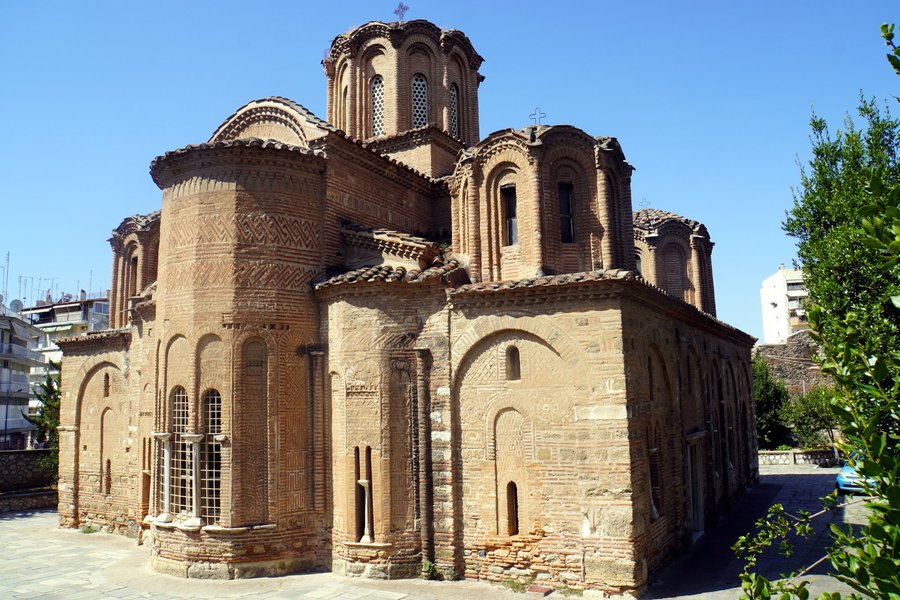
The city of Thessaloniki is not nice. The Byzantine churches are.Most of the churches in the lower town are squeezed between ugly modern buildings. I liked the upper town better. Some of the old Ottoman architecture has been preserved in the narrow streets and steep staircases. The frescoes there are among the most beautiful in Thessaloniki, but the monasteries are rather inconspicuous from the outside. I walked past the entrance to the Latomou monastery twice before I finally found it.Assif wrote in his review that it is impossible to find out the opening hours of the churches. This has not changed until today. You can‘t rely on the information provided on the Thessaloniki tourism website or on Google Maps. Even the info boards at the entrance to the churches are not fully reliable. I stood in front of the closed door to the Church of the Saviour three times, although the information board said: open daily from 7am to 3pm. But I only missed this one and the Byzantine Bath (closed on weekends), I could visit all the other monuments from the inside.
I visited Thessaloniki on a weekend in September 2023. On Saturday afternoon I found four churches open, either after a wedding (Hagios Demetrios, Vlatades Monastery) or after evening mass (Agia Ekaterini, Prophet Elias). But all churches were open on Sunday (with the exception mentioned above), from the end of morning mass around 10am until late afternoon. Photography was allowed in all monuments.
My highlights:Most beautiful frescoes: definitely …
Keep reading 0 comments
I only had half a day to visit the inscribed sites in Thessaloniki so I had to carefully plan my visit. First I picked the churches I wanted to visit most (7 out of 14) and planned a route which went through them. They are all not far from each other and the route can be perfectly done by foot. The problem is finding out the opening times. From the ones I wanted to visit (Rotunda, Acheiropoietos, Hagia Sophia, Panagia Chalkeon, Hagios Demetrios, Hosios David and Nikloaus Orfanos) only the Rotunda now serves as a museum. All the others are functioning churches and it is practically impossible to find out whether they are open to visitors or not before you head there unless you can call them before and talk to the priests in Greek. I was lucky though. In a summer Friday morning all the churches were open, although there were services taking place in three of them. Despite processes of secularisation, Greece is still a deeply religious country. Even morning masses in a working day proved to be well visited. It was impossible to visit the churches during service, but I could still stand at the door, listen to the liturgy and catch a glimpse of the interior, which is way better that standing in front of a closed church.
I will try to summarise my impressions:
1) The Rotunda surprised me as a very impressive massive Roman building. It was the second largest Roman building …
Keep reading 0 comments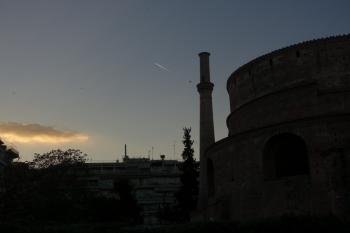
Late antiquity, the rise of Christianity and the early Byzantine empire are periods of history I have grown fond of. When you come from a site like the Pantheon in Rome or Diocletian’s palace in Split and go to a church like San Vitale in Ravenna, you actually see the epic change that took place in late antiquity. Thessaloniki is part of the transition and you will find plenty of sites from the late Roman (300 CE) period as well as early Byzantine period.
Thessaloniki functioned as my hub during my exploration of the Northern Greek WHS. So most of the site seeing was done at late hours and I did not manage to see all I had set out to visit. But possibly due to the upcoming Easter holiday, church services were held mostly in the evenings allowing me to sneak into most. Of the churches I found St Demetrios the most impressive. Also the tiny chapels gave a good impression of early Christianity.
Comparatively, though, Thessaloniki is a bit underwhelming. To me Ravenna offers the better early Byzantine churches. I also found the paleo Christian sites in Italy more appealing (e.g. St Ambrosius in Milan, not a WHS). And the ruins scattered across the city are similar to a site like Merida in Spain. I did wonder why the Roman forum and the palace of Galerius are not included.
Generally, I approve of the reduced scope of the inscription. Sure, Thessaloniki has a nice coast …
Keep reading 0 comments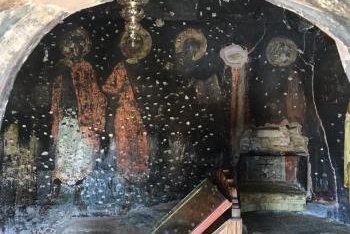
Visited August 2016.
It is possible to see all inscribed properties in just one day, but you have to start early as some churches are open only from 9am to 11am (Panagia Chalkeon). The most impressive for me was St. Demetrios although its interior looks very new and it’s hard to feel the byzantine atmosphere there. The most beautiful is Osios David/Latomou Monastery. Some of the churches are closed for the public (Christ Saviour). The most beautiful view of the city can be seen from Blatades Monastery and the northern city walls.
I really recommend a guidebook Monuments of Thessaloniki by Nikos Papachatzis in which you will find lots of info about early Christian and byzantine monuments; keeping it in hands while walking through the city you will have a chance to see many details that you would not have noticed without it.
Keep reading 0 comments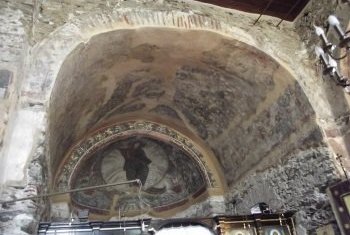
I agree with Charilaos' comment that the church of Ossios David is the most atmospheric of the WHSs in Thessalonika. More like a cave than a building, it is located on a hill overlooking the city.
Keep reading 0 comments
The very small Church of "Osios David" adjacent to the hill top Castle walls of Thessaloniki, has a charm and human scale above many of the other churches.
In a concrete city the softness of its stones and trees are very welcoming.
Thessalonikis very easy access to the sea meant that many conquerors or rulers demolished buildings of earlier times and send them as far as Sicily and even Syria.
Osios David has Columns and stones that are obviously broken left over items from the lucrative export industry.
Thessaloniki and its hinterlands easy sea access has left very few items from above ground buildings.
If you walk along the walls of the hill top castle, you can see broken carved columns and carved stones build in to the walls. The pity is that even in the last ten years, some items have been dug out and sold. I believe one column top remains visible on the south east of the wall, that is a replica of the few columns remaining at Pella, Alexanders City, 40Km away.
If you have an interest in human History & Geography, and its winter with no glare, get a good Russian detail map, Greeks do not print maps?, its possible to see 10,000 years of human history carved out in the surrounding landscape of Thessalonikis hinterland.
Keep reading 0 comments
I have visited Thessaloniki one week ago (August 2008), and I have been deeply impressed by the town. The walk along the waterfront is wonderful and you really can feel the greatness of the town`s position with its historical gulf. Looking at Alexander o Megas statue near the sea gives you a tip about the importance of this metropolis, WH objects are easy to find as streets in Th. are so regular. I particularly appreciated the church of Saint Demetrius, simply amazing...Walk and walk, since the town is really big. Via EGNATIA, the ancient street which linked Brindisi (and Rome)in Italy to Costantinopoli is alive and kicking there, full of traffic. I would not go to Th. in August since it gets very hot in the afternoon.
IMPORTANT> do not forget to walk up the the amazing, fantastic byzantine walls that still sorround the town. YOu can have a fantastic view of Thessaloniki and the gulf from there, at sunset for example, and have good meals in scattered taberna all around. I LOVE THESSALONIKI!
Keep reading 0 comments
Thessaloniki was a pleasant surprise for me. I hadn't thought much about it before, but it's really a very clean and modern metropolis with a nice view of the sea (especially from the top of the White Tower) and a much milder (and less smoggy) climate than Athens. Its WH monuments are scattered throughout the city, but are easy to find and represent a good cross-section of the city's history from ancient Greek and Roman to Byzantine and Turkish times. The Byzantine churches especially are very interesting, but also the remains of the Roman Palace and the Triumphal Arch merit a closer look. I wouldn't go to the city just for its WH value, but there are many other reasons to go there, and seeing its historical buildings is definitely a good way to become acquainted with Thessaloniki.
Keep reading 0 comments
Thessaloniki is a typical large Greek city. This means four lane roads across the city center, creative parking and so on.
The city's most prominent landmarks are the White Tower (lovely posted near the sea) and the Ayia Sofia. This church has an imposing front, and quite distinguished interior. The main colours inside are a kind of dark green, black and bordeaux. Somewhat mystique, especially in combination with the scarce glimpses of sunlight that manage to get in.
There are also innumerable small Byzantine churches scattered around the city. Quite often they are hidden behind apartment blocks, or blocked from the view by parked cars. If you've got some stamina and good walking shoes you can visit several of them, and also enjoy their frescoes.
Keep reading 0 comments
